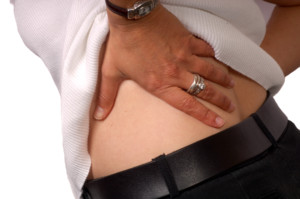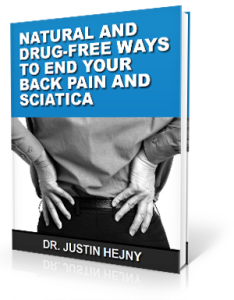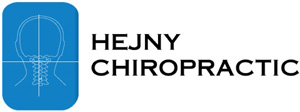 Low back pain originates in the lumbar spine, consisting of the L1 to L5 vertebrae. It is an extremely well-designed structure of interconnecting bones, ligaments, muscles, joints, and nerves all working in harmony with each other to support, strengthen, and allow flexibility to the body. However, due to the complexity of the structure, the low back becomes susceptible to injury and pain. Let’s take a closer look at the low back and how it works, and then discuss how to properly care for it.
Low back pain originates in the lumbar spine, consisting of the L1 to L5 vertebrae. It is an extremely well-designed structure of interconnecting bones, ligaments, muscles, joints, and nerves all working in harmony with each other to support, strengthen, and allow flexibility to the body. However, due to the complexity of the structure, the low back becomes susceptible to injury and pain. Let’s take a closer look at the low back and how it works, and then discuss how to properly care for it.
The low back has the great responsibility of supporting the weight of the upper body and provides mobility for things we do on a daily basis, such as bending, moving, and twisting. The muscles of the lower back help rotate the hips as you walk. They also add support to the spinal column. Nerves contained in the low back supply power and sensation to the muscles of the pelvis, legs, and feet.
When acute low back pain occurs, it generally stems from an injury to the discs, joints, muscles, or ligaments. When the body becomes injured, it reacts by creating an inflammatory response in order to heal the body. This inflammation can cause pain.
The brain has a hard time determining which part of the low back is actually in pain because the nerve supply overlaps to many discs, ligaments, muscles, and other spinal structures. To give an example of this, if the lumbar disc becomes torn or degenerated, it might feel like a pulled muscle because inflammation and muscles spasm can occur in the same area. This can be confusing to the brain.
Table of Contents
Symptoms of Low Back Pain
Low back pain can encompass a number of symptoms depending on the type and location. Here are a few more common symptoms of back pain:
- Pain that is dull and achy and confined to the low back region
- Burning and stinging pain that moves from the low back to the back of the thighs and sometimes into the lower legs and feet can include numbness and tingling and is usually diagnosed as sciatica.
- Pain that gets worse if you are sitting or standing for a long period of time
- Problems moving from a standing position to a sitting position, trouble walking, and issues with standing up straight
- A feeling of tightness or muscle spasms in the low back, hips, and pelvis

Tips for Easing Low Back Pain
There some things that you personally can do at home to ease up low back pain.
- Do not lie down on the job: It was once believed you should stay in bed and rest your back in order for it to stop hurting. However, new research indicates this is the opposite of the truth. A large group of doctors now recommend avoiding bed rest entirely if you can. If you must lay down, it is vital to put two pillows under your knees to support the lower back. And never lay face down as it causes the spine to twist.
- Cool it down: In the first 24 hours, it is important to use only ice, not heat, on the area where the pain is. This decreases inflammation and slows down the ability of the nerves to send pain signals to the brain.
- Heat it up: After 24 hours has passed, ice will no longer help reduce the pain of inflammation. Now, heat is the way to go as it may help to increase the elasticity of the muscles. You may feel much better after soaking in a hot tub for 20 minutes. *Talk to your doctor if you are pregnant, however.
- Try a new mattress: If your mattress is older and has begun to sag, it may be the source of your low back pain. If you cannot afford a new mattress at this time, you can try using a ¾ inch thick sheet of plywood between the mattress and the box springs.
- Opt for a massage: Maybe your spouse or good friend will give you a rubdown. Lie facedown on a sofa or bed and ask your friend to knead your back muscles. You can also look into local massage therapists as they are often not very expensive and are trained in how to do the right type of massage for your back.
- Get some rest: It is important to allow the body to heal while you get sufficient sleep at night. It is recommended to lie on your side with your knees flexed and a pillow placed between them.
- Chill out: Low back pain can be caused by muscles being tightened due to emotional tension. Try relaxation breathing exercises or other things to help you feel calm.
When a Professional Is Required for Low Back Pain
It may be hard to imagine, but a problem in the top bones of the spine can lead to low back pain. This is because the entire spine works together as a unit, and it explains why upper cervical chiropractic care is so effective in helping its patients cope with low back pain. It is a type of care not requiring repeated injections or taking pills every day to cope.
Here at Hejny Chiropractic, we make a thorough examination of your neck and then create a detailed and personalized care plan to help reach the desired result. Once it is discovered where your specific misalignment is located, we use a gentle method to help the bones of the neck reposition themselves naturally. We are not required to pop or crack the neck to get the desired results. This leads to a longer-lasting adjustment. Once the misalignment is corrected and the body has time to heal, many patients see an improvement in or an end to their low back pain.
To schedule a complimentary consultation with Dr. Hejny, call our Spring Lake Park office at 763-230-0116. You can also click the button below.
 If you are outside of the local area, you can find an Upper Cervical Doctor near you at www.uppercervicalawareness.com.
If you are outside of the local area, you can find an Upper Cervical Doctor near you at www.uppercervicalawareness.com.
